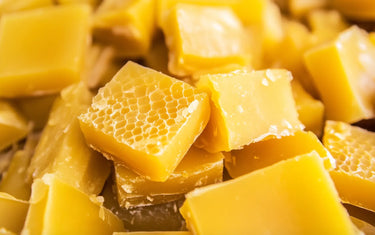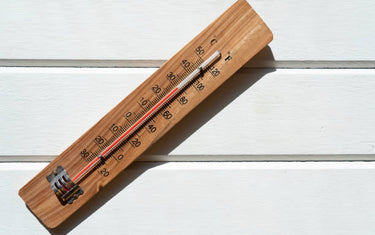5 min read / 9 January 2024 / yasmin sharp
Fragrance Notes: Everything You Need to Know
Explore the layered world of fragrance notes, from vibrant top layers to deep base notes, in this detailed guide for perfume lovers and aspiring perfumiers.
Share this post

Every fragrance is made up of a variety of ingredients, each sourced from different scent compounds, fragrance oils and essential oils.
But what makes every perfume and aftershave feel special is how the fragrance notes are combined, which adds layer and depth to the experience.
Fragrance notes are categorised as top notes, middle notes and base notes, with each variety stimulating the senses in their own unique way.
In this article, we explain everything you need to know about fragrance notes, so you have a better understanding of what goes into making a scent to remember.
What are fragrance notes?Fragrance notes are the different scent layers that are combined to create a complete, rounded scent. These layers are split into three distinct categories: top notes, middle notes and base notes. When the right configuration is used, it creates a full-bodied fragrance that offers a more fulfilling sensory experience. |

What are fragrance top notes?
A perfume top note is the top layer of a fragrance.
These are usually the first scents you experience after a perfume or aftershave has been sprayed, helping to create the initial impression you will have of the fragrance.
Because top notes are lighter scents they also tend to evaporate quickly, often lingering for about 10-15 minutes.
However, this is by design, as the intention is for them to serve as a gateway into the body of the scent, which can be found in the longer-lasting middle and base notes.
Some of the most popular top notes tend to be citrus based.
Orange, lemon and bergamot are good examples, whilst the likes of rose and lavender are common light floral scents included in fragrance recipes.
What are fragrance middle notes?
The middle notes of a perfume, which are also sometimes referred to as heart notes, sit at the centre of the fragrance.
They are essentially the foundation of almost every perfume and aftershave and account for anywhere between 40-80% of the final fragrance.
Compared to top notes, middle notes have more depth, which means they linger on the senses for longer.
They play an important role in the balancing of scents, serving as a buffer of sorts for the base notes, which may not smell as attractive on their own.
The best way to describe middle notes is full-bodied with aromatic scents like ylang ylang, neroli and jasmine popular picks with perfumiers.
Other common middle notes include black pepper, lemongrass, cinnamon and cardamom.

What are fragrance base notes?
Perfume base notes are another key part of a fragrance’s composition, working in tandem with the middle notes to add long-lasting depth and resonance.
They are richer and heavier than top notes and they combine with the middle notes to form the foundation of the fragrance.
Whilst they take a little longer to become apparent because the base sinks into the skin pores, base notes linger on beyond the other scents, sometimes lasting for hours.
Woody notes like cedarwood and sandalwood are popular base notes, whilst the likes of musk, vanilla and patchouli are often used to create a strong bottom end to the scent.
How do you tell the difference between fragrance notes?
The best way to distinguish fragrance notes is to gauge the time after a perfume or aftershave has been sprayed.
For example, you will often smell the top notes of a fragrance immediately after it has been sprayed.
When this initial burst begins to fade, the middle notes come to the fore, revealing the fragrance’s essence.
Beyond this point, the base notes will linger the longest, so are often the element that people tend to remember.
But whilst base notes hold the most weight in a fragrance, every note layer plays an important role in the overall experience.
From a perfumier’s point of view, it is about striking the right balance so that every stage reveals something pleasant, taking care to avoid clashing notes and displeasing odours that can affect your interaction with the fragrance.

What are the different types of fragrance notes?
Each layer of fragrance notes is broken down further into separate categories, including:
Fresh notes
Fresh notes are a good example of a perfume top note, with the light, citrusy smell providing a clear outline for a fragrance.
Different combinations can also create a different experience.
For example, blending bergamot and lemon forms a sharper, bitter scent, whilst bergamot and orange tends to be sweeter and fresher.
Floral notes
Floral notes can be used as the top or middle notes, giving depth and longevity to the fragrance.
They tend to heighten the sensory experience to make the scent more rounded, with the likes of ylang ylang and lavender being common ingredients used by some of the most popular fragrance brands.
Fruit notes
Another option for a middle note could be fruity notes, which help to add more depth whilst blending easily with a wide range of other ingredients.
For example, strawberry and apple can give a fragrance a juicy, sweeter appeal, whilst blackberry or cherry are richer and a little more musky.
Spice notes
When combined with floral notes, spice notes can offer a warmer depth that sits close to the heart of the fragrance.
Good examples of spice notes include nutmeg and cinnamon, which add more sweetness, whilst the likes of basil and rosemary bring their herbal qualities to the fragrance blend.
Wood notes
At the bottom of the fragrance, you may find wood notes like sandalwood, pine and vetiver working in tandem with the middle notes to strengthen the scent’s lifespan.
Some wood notes are a little more earthy, such as oakmoss or patchouli, whilst others tend to have a sweeter edge.
Musk notes
Musky notes are deep and rich, helping to complete the scent’s foundation, giving it the strength it needs to linger on the skin.
There are several different types of musk that can be used in a fragrance, including cashmere musk, black musk and Egyptian musk, each with their own individual traits that can be used to create a unique fragrance.

Whether you are a budding perfumier or simply curious to learn more about the different notes of perfume blends, this guide should give you a good idea of how fragrances are made.
It will help you have a better understanding of how the top, middle and base notes interact and combine with each other to make a complete whole.
And because there are so many combinations available, when it comes to creating new fragrances the possibilities are almost endless, making it easier to find one that suits you.










